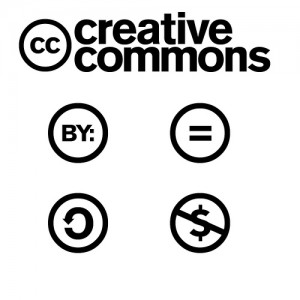To keep the focus on the two-way direction of open content -- both contribution and use -- Fitzgerald and his team offered a framework of nine tips, based on “The Cathedral and the Bazaar,” an essay about open source software engineering.
GOOD CONTENT COMES FROM PERSONAL PASSION.
Maybe a particular unit gets you enthused. Or maybe a lesson plan irks you because it falls short of your expectations. Either way, that enthusiasm should be the catalyst for creating, editing, or expanding upon the material, and then republishing it. Good teachers are already doing this, Fitzgerald says -- except for the final step.
“The change is what actually happens when it’s done,” he says. “Instead of hitting 'save' and putting it on your hard drive, you’re hitting 'publish' and putting it on the Web.”
GREAT TEACHERS SHARE THEIR GEMS.
You probably have a lesson or two in your holster that you know is always a hit with your students. Don't hoard them. Share them with colleagues, and acquire their go-tos as well. Be willing to alter them into a format that jives better with a different teaching style.
LICENSING IS IMPORTANT.
Open content published through open licenses like those offered by Creative Commons allow for varying degrees of modification. If you’re going to edit or combine useful items, be sure you understand their respective licenses, so you don't find yourself in a spot where others can't add on to your work.
HAND OFF THE LESSONS YOU’VE TIRED OF.
Just like you should seize upon enthusiasm, so you should acknowledge fatigue. And in the open content world, there's usually a competent successor willing to put a fresh spin on your material. Also, when the time comes for you and your content to part ways, be sure to publish it in text form to make it more visible in Web searches, rather than as a PDF or Word document.
“This is kind of how it works in the software world too,” said Jeff Graham, FunnyMonkey’s lead developer. “The successful projects are the ones where people are using them, but also where people are talking about them.”
SHARE YOUR PROBLEMS; SOMEONE WILL SEE AN ANSWER.
Every teacher, administrator, parent, and student has a different skill set. Confessing your biggest challenges to the open world—and just as importantly, making sure people know it’s out there—is a strength that shows willingness to improve and may result in advice from those who can help.
COLLABORATE WITH STUDENTS AS WELL AS COLLEAGUES.
Open content isn't only about peer-to-peer teacher-to-teacher collaboration. It should also allow you a new way to build students' conceptual understanding by revising old items or creating new ones.
“If you have a set of resources that needs to be cleaned up, that’s a good opportunity for students,” Fitzgerald said. “And by giving your students the autonomy with the support to do this and do this right, you can create an environment where students are sharing this work. People are talking about digital literacy; that’s it.”
VALUE YOUR STUDENTS AS AN EDUCATIONAL RESOURCE.
Not only can open content allow your students to tackle concepts from a new perspective, it can also pave a way for them to impart their own knowledge. Who else is closer to the challenges of learning new material for the first time than students who tackle that challenge on a daily basis? Hearing that voice can help you rethink the content you give them, and in an open content world, allow you to edit it to make it better.
DON’T BE AFRAID OF FAILURE
Remember telling your students that you learn the most when you fall short? Time to practice what you preach. And sharing when, why and how you fall short in an open content community can often lead to input that results in the most innovative solutions.


